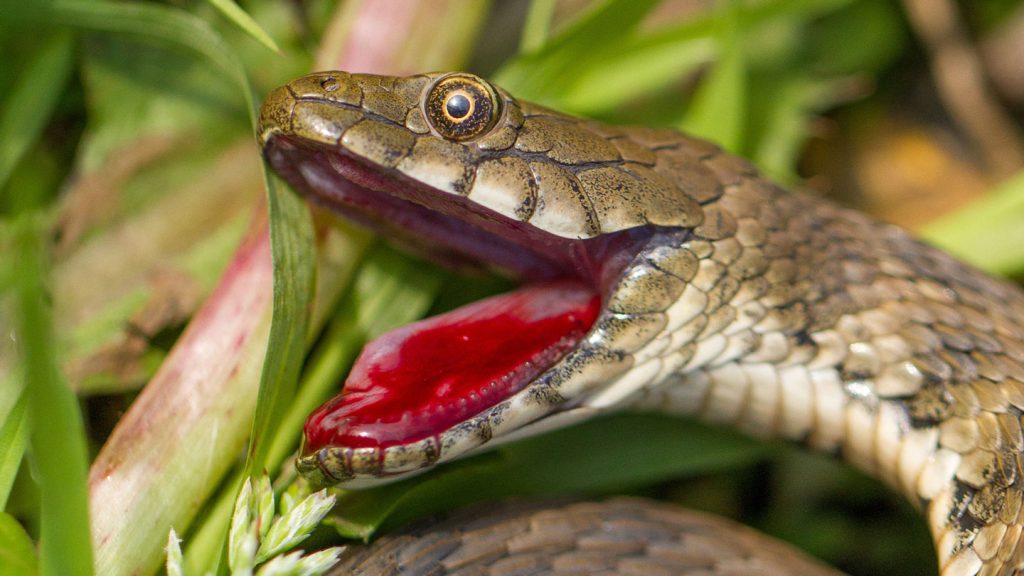To avoid being eaten, some animals pretend to be dead until they can escape. A study suggests that using multiple unappealing elements in fake deaths makes the whole act more effective.
Dice snakes bleed from the mouth and cover themselves in musk and feces pretend to be dead for less time compared to those that don’t, researchers report May 8 in Biology Letters. The scientists suggest that these defenses may work together, making the display more impactful and helping the snake escape from predators faster.
Playing dead is a common defense mechanism across the animal kingdom (SN: 11/1/23). It often involves prey lying still while exposing vulnerable body parts, making it a risky but potentially rewarding move. Many predators won’t touch apparently dead things, perhaps due to parasites, or because the lack of movement doesn’t trigger their predatory response.
The dice snake (Natrix tessellata) is very elaborate when faking its death. When captured, it will thrash around and hiss before covering itself — and probably the predator — in feces and musk. As a dramatic finish, it opens its mouth, sticks out its tongue, and fills its mouth with blood.
Biologists Vukašin Bjelica and Ana Golubović from the University of Belgrade in Serbia wanted to know if these combined defenses make the act happen faster. They caught 263 wild dice snakes on the island of Golem Grad in North Macedonia and observed any feces or musk smearing. They then placed the snakes on the ground and hid, imitating a hesitant predator, before recording their subsequent behaviors.
Just under half of the snakes covered themselves in musk and feces, while about 10 percent bled from the mouth. Some fake deaths without musk, poop, or blood lasted nearly 40 seconds. The 11 snakes that used all three defenses spent approximately two seconds less pretending to be dead, on average.
Perhaps the combination of tricks makes the display more intense for the predator, cutting their interaction short and increasing the snake’s chance of survival. “Two seconds might not be a lot but can be just enough for a snake to escape if the predator backs away from attacking it,” Bjelica says. “Even the smallest chance can make a difference in being eaten or not.”
According to evolutionary ecologist Tom Sherratt of Carleton University in Ottawa, over the last decade, “there has been a push to see antipredator responses as an integrated whole, rather than in isolation.” He believes the new findings raise questions: “Why the variation? Why don’t they all use auto hemorrhaging and fecal display? It could be related to their experience, but there’s variation that needs to be explained.”
Ecologist Katja Rönkä of the University of Helsinki suggests that the next step is to study the predator side of this behavior: “Why are they deterred by ‘dead’ animals, especially since they just saw them alive?”



